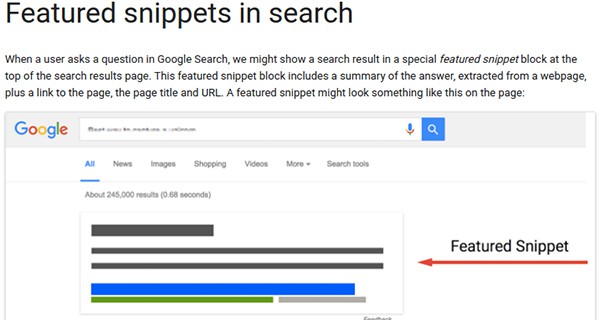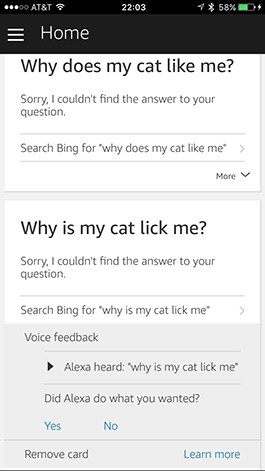Google Home is a little device that plugs into the wall and responds to your voice. It can play recorded music or the radio through services like Google Play Music and TuneIn, and it can respond to questions based on the knowledge Google has amassed throughout the 21st century. If you’ve got the correct hardware at home, like a Nest Thermostat, Samsung’s Smartthings, or Philips hue, Google Home can allow you to control some of your home’s functions with your voice.
We’ve had some time to get to know the Google Home and there are a LOT of things to like about it. Its voice recognition is robust and its audio is impressive for being a little tiny speaker. At the same time, when one looks at Google Home through the lens of a smarthome, AI, product, one quickly realizes that the device is not quite where the demonstrations were during the 2016 Google IO developers conference, nor is it a device that delivers on the promise of its advertisements.
I’ll cut to the chase — if you’re looking for a quick answer on whether or not you should rush out and purchase a Google Home device, the answer is a definitive “NO: you can wait.” The functionality of the device will undoubtedly get better with time, so you’re not missing much right now and while it likely won’t fall in price anytime soon, at $129, it’s advisable to wait for a sale at your local or online retailer before you pick one up.
If you want to know why we’re making this recommendation, as well as how Google Home fares against Amazon’s Echo and Alexa and Apple’s Siri, read on because we go into detail.
There’s a lot to like about Google Home
The most impressive thing about Google Home is not the fact that it recognizes and responds to your voice — Amazon’s been doing that for nearly two years already — but how it’s able to usefully access Google’s amassed and organized knowledge in an intuitive, innovative, and friendly way. While other voice assistants can read back bits and pieces of the Wikipedia, Google Home manages to take answering general query questions to the next level when compared to its rivals.
As an example, suppose you ask Google a question like “why does my cat lick me?” Rather than a list of results, you’re usually presented with an info box, or a snippet.
These snippets don’t just come from anywhere. Google’s computers detected my question and then took a look at all of the available pages that they’ve indexed for search results. One such page, from Catchannel.com, discusses this particular issue in succinct detail, so Google shows me that answer above all search results in order to give me what could only be deemed as a great experience. So why does my cat lick me?
Wait — why are we discussing snippets? This is about the Google Home, an assistant and smarthome device, right? Exactly. What’s important to understand is that this snippet information is a key differentiator for the Google Home experience when compared to rivals like Alexa and Siri. Basically, when I ask Google Home why my cat licks me, the device:
- converts my words to text
- searches those words online
- retrieves the snippet
- converts or records that text into an audio file like an MP3
- plays that audio file aloud for me to hear
Google actually knows a lot of things because it spends every minute of every hour of every day crawling the Open Web and other parts of the Internet to make sense of the information that humanity is constantly publishing. While Siri and Alexa have excellent voice recognition, they can’t do very much with this seemingly regular question about a cat licking a human.
Google Home’s ability to deliver these answers represents a huge step forward compared to the devices that came before it. Amazon’s Alexa has access to the U.S.’s second largest general search engine, Bing — but only as a part of the info card you can view in the Alexa app or as a visual from a Fire Tablet. Bing doesn’t provide snippets like Google does, and Alexa won’t read the results of a page listed. She just doesn’t have access to the information. Apple’s Siri has access to search engines Bing and Wolfram Alpha (a “computational knowledge engine”) but again, neither of these parse data into snippet form and, even if they did, Siri’s current experience is designed for a screen, so she barely reads anything to her users at all; preferring instead for you to give your iDevice visual attention.
In addition to the snippet advantage, Google Home allows users to ask about traffic times on-the-fly. Ask Google Home how long it takes to get to the airport and she’ll look it up via Google Maps and tell me that it’ll take 45 minutes to drive to Denver International Airport. Alexa will only respond if I’ve pre-set the airport as my commuting destination and Siri will not only ask me which airport I want to go to, but insist that I scroll through a list of available airports on my iDevice in order to give me an estimate. The final task where Google Home has an advantage is with maintaining a moderate level of contextual conversations. Ask Google or Alexa who actress Thandie Newton is, and they’ll both tell me that according to Wikipedia, she’s an English actress. If I follow up with Google Home and ask “How old is she?” Google Home will respond with “44 years old.” Alexa can deliver this information, but only if the user starts from scratch by asking “How old is Thandie Newton?”
Where voice control gets meh.
As is the case with all of these services — “OK Google” or “Alexa” or “Hey Siri” — every single utterance at these devices requires use of the “wake word.” When it comes to Google Home it means means I’ve got to say:
and then ask:
Having to utter “OK Google” before each sentence makes the contextual nature of the system’s responses almost meaningless. Privacy concerns aside, if it could hang on for a while before timing out, it’d be far more impressive.
But it doesn’t, so it’s not.
This gripe brings me to the list of cons about the device. While Google Home has some serious fundamental advantages, which we speak about above, it’s no savior to this market. The first pet peeve? That wake word!
OK Google is simply awful compared to what users need to say to wake up the device’s rivals.
“Alexa,”
“Hey Siri,” and even
“Cortana” for Microsoft…
are, with their three-syllable wake words, far easier to utter than “OK Google” with its four syllables. It’s also worth noting that OK Google has no less than three glottal stops in those four syllables, which means users are forced to exercise harsh openings and closings of their vocal cords three times whenever they want to access the device. I found my throat feeling a little sore or worn around the Adam’s Apple after only a few uses, and that’s no good since voice activation and engagement is supposed to make things easy.
Google Home also has far less support for third party services than Amazon’s Alexa. This may change over time, but there are no promises there. We buy technology products for what they offer at purchase, not what a marketer promises will happen later.
Speaking of marketing promises, Google Home is filled with unfulfilled ones. In their demonstration video, Google shows the device answering follow-up questions like the Thandie Newton ones discussed above without having to restate the wake word. It also shows the device sending text messages and making reservations. Asking Google Home to do that now yields responses like “I can’t text yet,” and “I’m not sure how to help with that.” Package tracking also seems absent. The most striking mis-fire of the demonstration, however, was when I attempted to replicate the voice commands from the boy in the demo. After confirming the number of stars in the galaxy, Google Home correctly answered me with the Sun, rather than Proxima Centauri. When I asked Google Home to show it on my TV (via a Chromecast device), Google loaded a Meghan Trainor video. When I stopped it and asked for it to show me Proxima Centauri on the Chromecast, it showed me not a visual or video regarding the star, but one discussing the discovery of Proxima Centauri B, a recently uncovered planetoid. The overall experience reminds me of my third grade report card’s mark on listening skills: Needs Improvement.
Here’s the aforementioned demo:
On the music side, Google Home has access to YouTube Red, Google Play Music, TuneIn, and Spotify Premium. If you’ve got a Spotify student plan, then you’re out of luck. Google Home also, and surprisingly, lacks a Bluetooth radio, so you can’t connect it directly to your phone or tablet — a pretty surprising omission for a device that retails at about $130. Instead, Google Home supports the Google Cast protocol, which allows users to connect to Google Home wirelessly without the need to perform a Byzantine Bluetooth pairing procedure. To be fair, pairing a bluetooth device on an Echo is a simple matter by virtue of the fact that the user can ask the device to do so with their voice, but let’s face it — Bluetooth can be a pain in the tuchus. If you have Chromecast or Chromecast Audio devices, you can use the built-in app to designate where you want that audio to play and then use your voice to get it there. As long as your device has access to the wifi signal that the speakers are connected to, you’re in great shape, which is a far cry from the 30 or so feet your device’s range is limited to when using Bluetooth. The Chromecast integration is a cool option when you consider that whole home audio can be attained by adding a $35 device to any speaker system with an aux-in jack in your home. Previously, this sort of functionality was limited to products like Sonos, which supply connected speakers for no less than $150 — and that’s when they’re on sale. To take advantage of the casting functionality, your audio apps will need to support it or you’ll have to use an Android device that allows its audio to be mirrored to a Google Cast device.
On the smart home side, as stated before, Google Home can control Samsung’s Smartthings hub devices, as well as Nest’s Thermostat and Philips Hue. All of those platforms are great, but Google Home lacks support for smart home staples like Belkin’s Wemo or TP-Link’s Kasa — both of which provide smart, connected plug-in sockets and light switches. These players are not only big in the space, but also reliable and affordable, so I hope to see them added soon. Right now, your best bet for control is via the creation of an IFTTT recipe or applet, which is a little clunky when compared to native functionality.
The Bottom Line?
To conclude, Google Home is a device with a lot of potential that’s just not where it needs to be to justify its somewhat considerable price of $130. It’s $50 less than Amazon’s Echo device, but lacks crucial bluetooth functionality, which should be present at this price. Additionally, Google Home is priced $80 more than the Amazon Echo Dot, a voice recognition device that’s got all of the smarts of the full-sized Echo, but has the ability to connect to any speaker system accessible by Bluetooth or an aux or line-in headphone jack, which gives it a lot of flexibility and allows for your voice assistant to play music back in stereo. Remember when stereo mattered?
All of these devices have a long way to go and Google Home is no exception. The thing that leads me to the conclusion that buyers should wait is one of principle. This product is not where it needs to be given the marketing and demonstration materials that were used to promote it, and it didn’t need to be that way. While it’s got some nice tricks and the future seems bright, the promise of Home is not at all fulfilled here. I have no doubt that one day it will be, but by then the device may be far less expensive, or have new, smaller, sleeker hardware. It needs some time to develop both its home-grown Google skill set and its third-party skills, which are meager at best right now. So, as cool and cute though it may be, I’m getting an R2-D2 vibe here: It’s just not the droid you’re looking for… yet.



